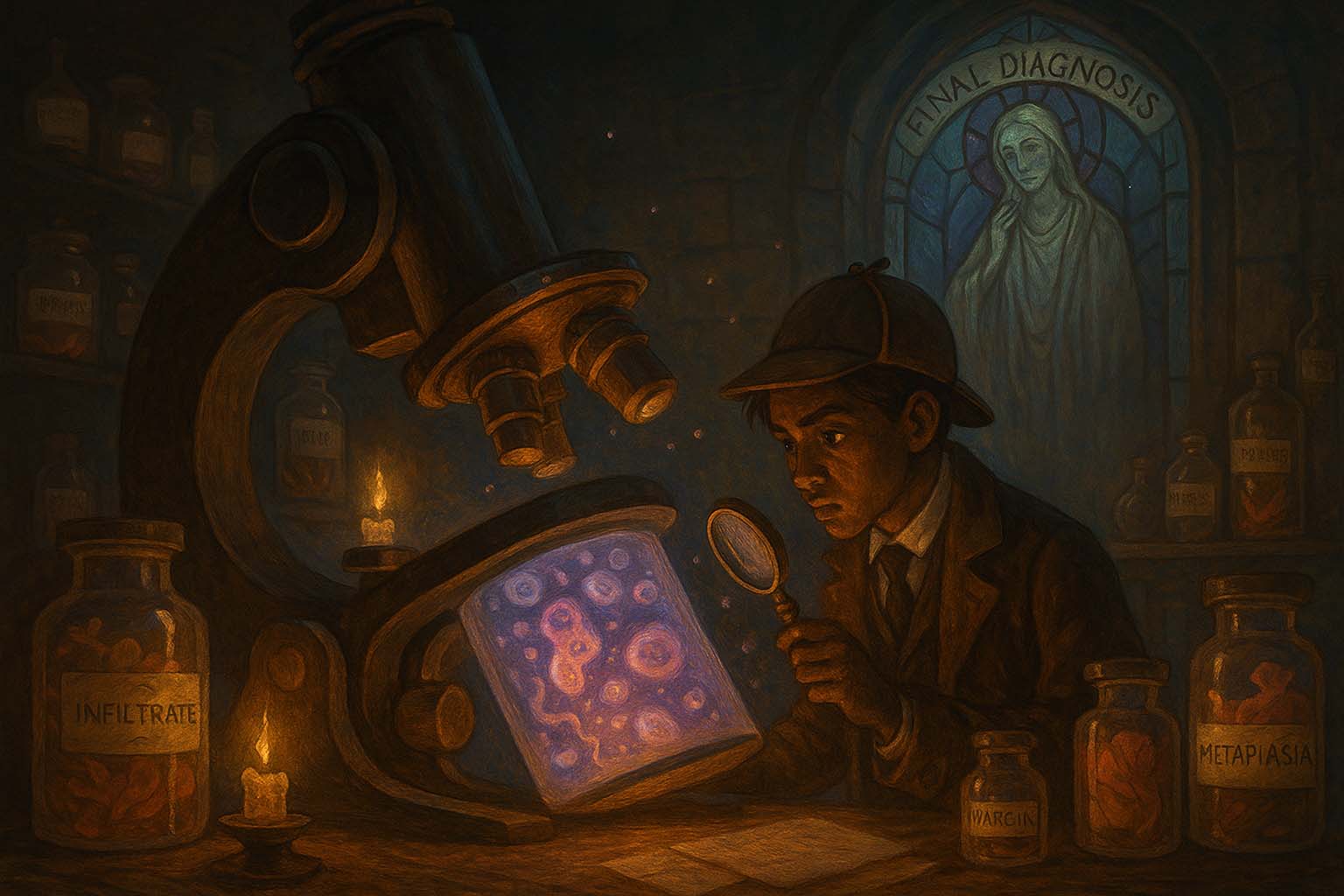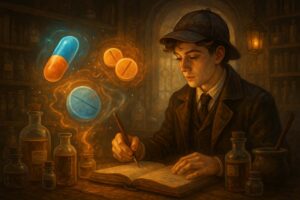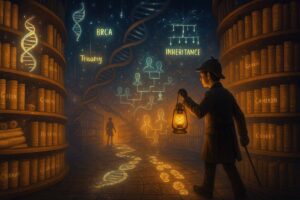
Pathology
- Posted by admin
- Categories Diagnostics & Interventional Medicine
- Date May 24, 2025
- Comments 0 comment
The Tissue-and-Truth Detective’s Domain - Cracking the Cases of Cells, Slides, and the Final Word in Diagnosis
1. Introduction: The Scene of the Specialty
Step into the shoes of a Pathology sleuth.
This is the backstage of every diagnosis—the lab where certainty is born, and speculation is silenced. Pathologists work in the realm of the unseen, where cells become sentences and stains tell stories. They don’t just confirm disease; they name it, stage it, and sometimes, discover it first. Welcome to a world where a biopsy can unravel a mystery, and where one glass slide can explain a lifetime of symptoms.
2. Key Mysteries They Solve (Common Conditions & Roles)
These detectives specialise in solving cases involving:
- Cancer Diagnosis and Staging – from fine needle aspirates to resected tumours.
- Infectious Disease Identification – via histology, special stains, and molecular probes.
- Autoimmune and Inflammatory Disorders – spotted through tissue reactions and patterns.
- Death Investigation and Forensic Pathology – when the cause of death hides beneath the surface.
Each case demands pattern recognition, cellular fluency, and the courage to make the final call.
3. Their Trusted Tools & Techniques
Every detective has their kit—and in Pathology, tools may include:
- Microscopy – light, polarised, and electron to reveal cellular architecture.
- Histological Staining (H&E, PAS, Ziehl-Neelsen) – bringing out patterns in tissue and blood.
- Immunohistochemistry and Molecular Testing – identifying proteins, mutations, and origins of disease.
- Gross Specimen Examination – from organs to biopsies, documenting macroscopic clues.
This is meticulous, layered work—turning a piece of tissue into a conclusive diagnosis.
4. The Charms of This Field: Why It Captivates the Curious
- Ultimate Diagnostician: Your word often determines treatment plans, prognosis, and pathways forward.
- Pure Pattern Recognition: The brain loves the elegance of cellular architecture and variation.
- Stillness with Significance: No emergencies—but everything you do shapes outcomes.
- Intellectual Variety: Every body system, every specialty, every disease eventually passes through pathology.
This is where quiet thinkers wield immense clinical influence.
5. Challenges: The Toughest Cases They Face
- Isolation from Patients – You rarely meet the people you diagnose.
- Diagnostic Ambiguity – Some samples defy clear answers or contain mixed pathologies.
- Volume and Precision Pressure – High workloads and zero room for misclassification.
- Delayed Gratification – Your impact is vital but often behind the scenes.
But the seasoned pathologist knows: truth isn’t loud—it’s layered, stained, and seen under the lens.
6. Famous Cases and Hallmark Clues
- The “Classic Presentation” – Invasive ductal carcinoma confirmed on core biopsy: grading, margin status, and receptor typing all follow.
- The “Zebra” – Non-caseating granulomas in a lung biopsy: sarcoidosis vs TB vs fungal infection.
- The “Aha Moment” – Identifying Reed–Sternberg cells in lymph node aspirate: classic Hodgkin lymphoma.
7. Your Training Trail: How to Join the Investigation
To become a Pathology detective:
- Train in general medicine or surgery, then specialise in anatomical or clinical pathology.
- Develop comfort with cellular detail, diagnostic criteria, and molecular interpretation.
- Learn the language of disease—what it looks like, how it grows, and how it dies.
- Stay curious: pathologists are forever students of biology’s nuance and variation.
Whether confirming cancer, ruling out rejection, or solving a forensic mystery, you are the keeper of the final diagnosis.
8. Final Words: The Signature of the Pathology Detective
Pathology detectives are the eyes of medicine at its most fundamental level.
They read what tissue cannot say aloud, and find clarity where scans and symptoms only hint.
They solve the puzzle, close the case, and honour the science behind every decision made in a hospital.
So if you’re drawn to detail, discovery, and the quiet thrill of being right at the root of truth—then this is your diagnostic dominion.
You may also like

Clinical Pharmacology

Clinical Genetics

